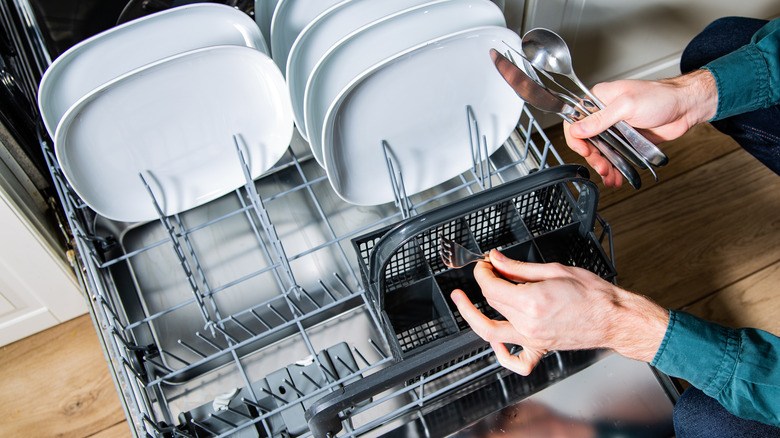You've Been Loading Your Dishwasher All Wrong This Entire Time
When you consider all your household appliances, the dishwasher may be the hardest-working one of all. It takes greasy, grimy dishes and makes them sparkling new again with just the push of a button.
And, for the hand-washing enthusiasts among you, using a dishwasher has been proven the superior method. To kill all the germs and bacteria lurking on our dishes, it requires hot water in the range of 140 to 145 degrees, per The Washington Post, which our hands simply cannot take and most faucets can't produce.
Plus, to add insult to injury, when hand-washing dishes, you're likely using a kitchen sponge, which research has shown is one of the dirtiest spots in your entire home. Essentially, you're adding more bacteria to a dirty plate when hand-washing it with a sponge.
But, to get the most bang for your buck when using a dishwasher, you do need to load it correctly. If you find that your dishes aren't coming out as clean as you'd like, you've probably been loading your dishwasher wrong this entire time. Here's the right way to do it.
This is the best way to load your dishwasher
You may be rolling your eyes, but according to Consumer Reports, there is a right way and a wrong way to load your dishwasher.
Let's start from the top. The top rack is the place for small bowls, cups, and glasses. You can place dishwasher-safe plastic items there, too, but not next to heating elements that could lead to warping. Don't overcrowd the rack, or else you may have to deal with breakage or inefficient cleaning.
The bottom rack should be reserved for serving bowls, plates, and large pieces. The ideal place for oversized items like platters and cutting boards is on the sides of the bottom rack so they don't block the spraying water. If you have dishes with baked-on food, put them facedown near the lower spray arm for the best cleaning.
For the silverware basket, never place knives upward because it could lead to injury. Always put knife handles up. But forks and spoons should be placed with the handles down so the heads get washed. To keep forks, knives, and spoons from nesting within each other and not getting a good clean, mix them instead of grouping each kind separately.
Finally, since some dishwashers have special features or high-tech elements, be sure to read your owner's manual for the manufacturer's advice on the best way to load.

